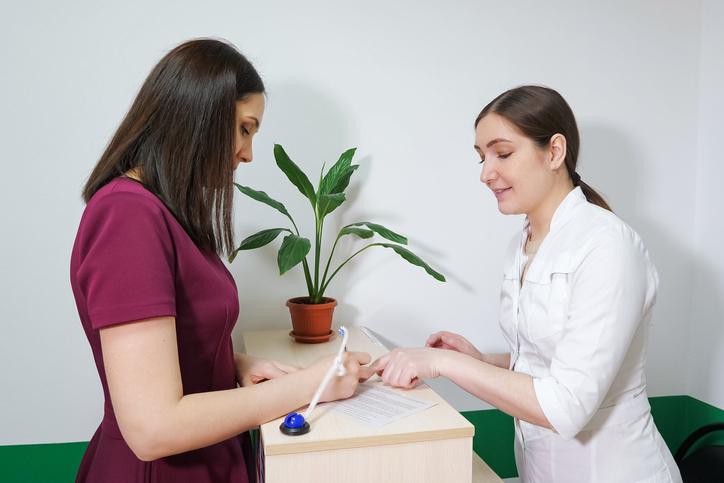When you work at a medical office, you’ll have many different responsibilities. You’ll be in charge of scheduling appointments, sending out reminders, updating files, and much more. In fact, sometimes your duties might even involve taking a patient’s vital signs. Taking patients’ vital signs is often one of the first steps taken during an assessment at a medical clinic. Why? Because a patient’s vital signs are an important indicator of how well their basic bodily functions are doing.
At Medix College, you’ll receive hands-on training that will prepare you to launch a successful career in a medical office administrator role within a medical clinic. You’ll learn many different things as a part of your training, including how to take a patient’s vital signs! Here’s a sneak peek at some of what’s involved in the process.
Check a Patient’s Body Temperature After Medical Office Administration Training
One important vital sign that healthcare professionals pay close attention to is body temperature. A normal body temperature ranges from approximately 36.4 degrees Celsius (97.5 degrees Fahrenheit) to 37.6 degrees Celsius (99.68 degrees Fahrenheit). Temperatures below this threshold could indicate that the patient has hypothermia, while temperatures above it could mean that they have a fever. Usually, a person’s body temperature varies depending on a number of different factors. A patient’s recent food and drink intake and activity level, for example, can affect their temperature. However, so can certain medications or infections. After you complete your medical office administration training, you’ll know how to take a patient’s body temperature through various methods.
Take a Patient’s Pulse
A patient’s pulse is important because it measures their heart rate, which is the number of times their heart beats per minute. After you complete your medical office administration course and begin your career, you may sometimes find yourself taking a patient’s pulse. A patient with a pulse of between 60 and 100 beats per minute indicates a normal healthy heart rate. Pulse rates can fluctuate depending on exercise, injury, stress, or illness. There are several different ways to measure a patient’s pulse. When taking a pulse rate, you could press on the artery located on the side of the patient’s neck, or you could also check for their pulse inside of the elbow, or at the wrist using your first and second fingertips.

It’s Important to Measure a Patient’s Respiration Rate
Another important vital sign is a patient’s respiration rate. This is the number of breaths per minute a person takes. If ever you need to take this vital sign, you’ll have to make sure that the person is at rest, and not performing anything while you are taking the measurement. You’ll have to count the number of breaths the patient takes for one minute. Normal respiration rates for healthy adult patients at rest range from 12 to 20 breaths per minute. Respiration rates tend to increase when a patient is suffering from fever or illness and may have difficulty breathing.
Are you interested in medical office administration school?
Contact Medix College to learn more!





